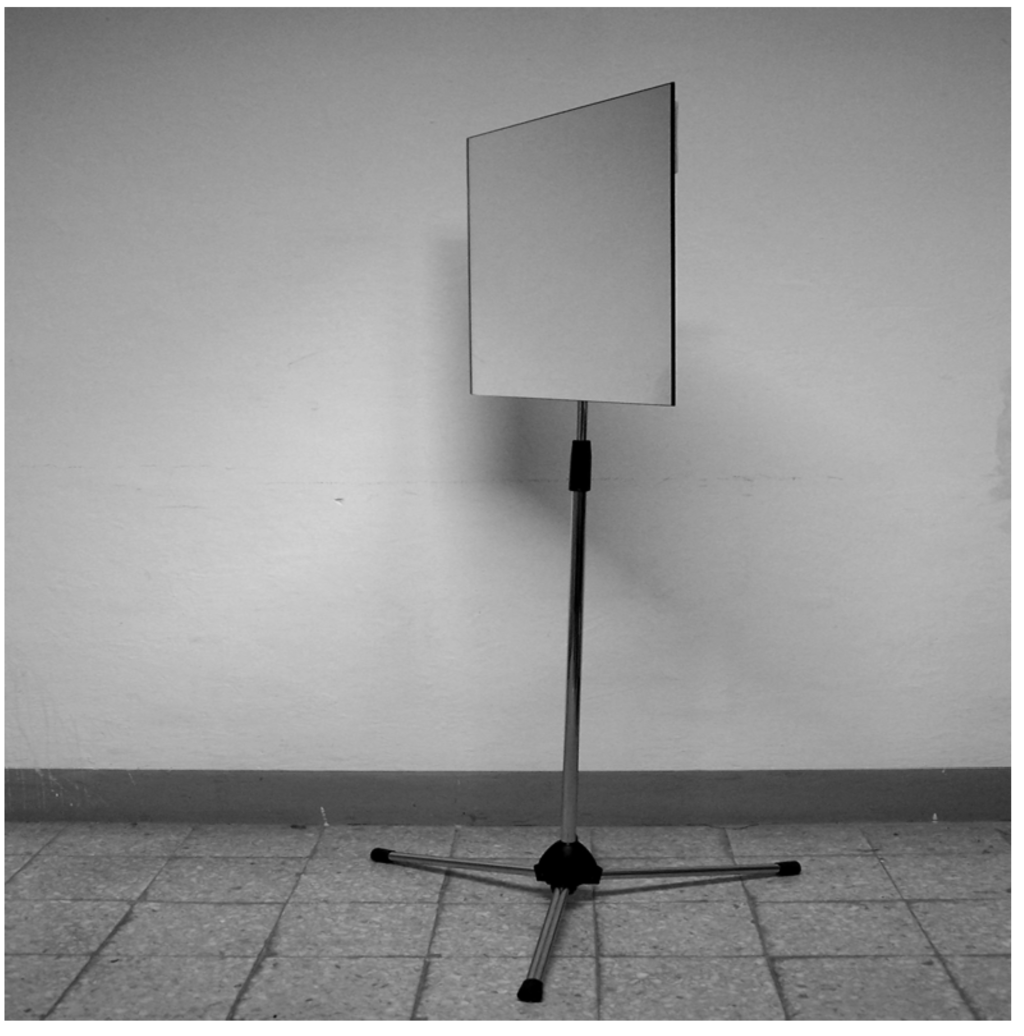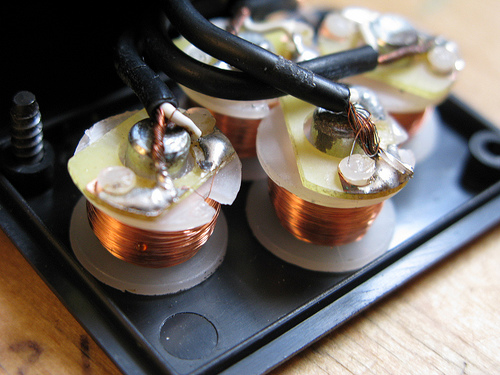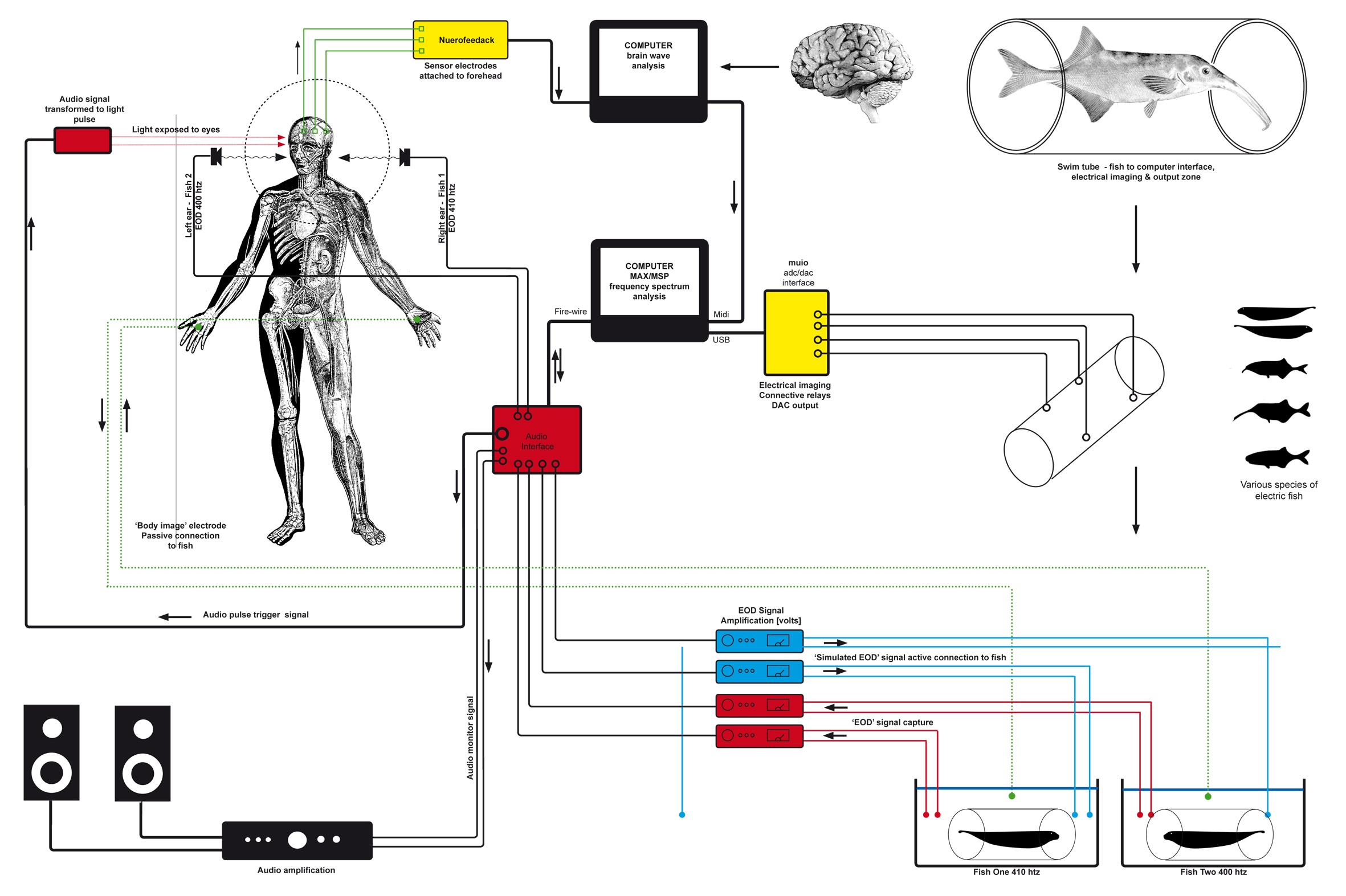I had read about this experiment by which staring at one's own reflection in a mirror in a darkened room for some time, can induce vivid hallucinations. For purposes of research, I had to try it. I found my bathroom could meet the following requirements... "... a quiet room dimly lit by a 25 W incandescent light. The lamp was placed on the floor behind the observer so that it was not visible either directly or in the mirror. A relatively large mirror (0.5 m60.5 m) was placed about 0.4 m in front of the observer. The luminance of the reflected face image within the mirror was about 0.2 cd mÿ2 and this level allowed detailed perception of fine face traits but
Tag: perception
Inverted vision experiments
An early experiment in 'perceptual plasticity' was conducted by Psychologist George Stratton in1896. He used his inverted vision goggles, over a period of 8 days, and over time adapted to the point where he was able to function normally. When the glasses were removed, it took some time for him to adapt back to seeing the world as normal without them. See also A lesser-known experiment over three days in 1899 used a set of mirrors to view his whole body as if tilted by 90 degrees. He describes interesting motor control anomalies and even an experience which he describes as an 'out of body experience'. Currently, I am searching for more information and documentation on this experiment. Theodor Erismann (1883-1961) and Ivo Kohler
Clay hand experiment #1
Working again with Lizzi Lewis of BEAM Lab and Manchester Science Museum we developed a workshop based on the 'Rubber Hand Experiment'. As we had to work with a large number of people and we didn't have funding to get loads of rubber hands. So we made the hands in the workshop with clay and used gloves full of different materials, sand, gel, lentils, etc. This had some interesting outcomes, that warranted further research... As you can see the hands were diverse in form, for the illusion to be effective the hand does not need to be true to life necessarily. Some hands were made purposefully alien for experiments and seemed to work effectively. I wondered if participants are more likely
The Sensorium of Animals
Electroreception in Experimental and Historical Media and Design Research. I was pleased to be invited to take part in this project along with an interesting selection of artists working with sound animals and the invisible world of signals as well as a cognitive neuroscientist and an expert in electric fish... "This research project explores the possibilities of technology-mediated systems to alter the human sensory apparatus from artistic-experimental and media historical angles. One part of this research focuses on possibilities of expanding the human sensory system beyond its biological limits, taking inspiration from sensorial abilities found in certain animals. Artistic-experimental systems, for instance in the field of wearable technology, will be tried out, researched and made available. The other part of this research
DIY Neuro stimulation
Reposted from my other blog 2009... I think the discussion around Michael Persinger's God helmet experiment was really interesting. I had to act on this and investigate the realm of experimental psychology further. I got in touch with him to ask some questions about the technology and the experimental process. I asked if I could make an array electromagnetic coils with oscillating magnetic field could generate similar effects. Which he seemed to think was feasible. I decided to make a modified version of the god helmet to work with my Enki interface. Here is a view my DIY neuro-stimulation device there are 4 coils which oscillate with magnetic frequencies, I have been using MAX MSP to drive these using electrical pulses derived from the
Enki interface 2006-2013
This project formed the basis for my PhD proposal. Initially, it was an investigation into the behaviour of electric fish, which have the ability to navigate and communicate using electro-perception. I investigate ways in which to communicate and interact with them. , I soon started to become interested more widely in perceptual and psychological experiments with humans; themes of interconnectedness, extending sensory perception. More specifically a notion of the 'body as electric image'. " The ENKI project was developed through an Arts Council, International Artists Fellowship, Pepiniere programme, Paris, with Centre National de la Recherche Scientifique (CNRS) France in 2006. It has been shown in the UK Europe including, Dutch Electronic Arts Festival, NL, CAAC, Seville, Spain 2007. International Festival of Art /Science
ENKI exhibition at Kapellica Gallery
10/2012– 01/2013 Enki [Solo show] Kapellica Gallery, Ljubljana, Slovenia Enki experiment 5 Possibly the final showing of the ENKI project ENKI is a series of experiments in bio-interfacing between humans and certain types of Electrogenic Fish .. Ultimately this is achieved through psycho-acoustic audio and visual entrainment as a means of modulating human emotional state. During this process, bio-electrical activity is monitored and used as a means to create a feedback loop between organisms. The research aims to study the interaction between tiny bio-electrical fields of both species [human and fish] specifically the way in which these fields modulate and the means of controlling them. It also aims to discover if it is possible to create a harmonious state of interaction that can



